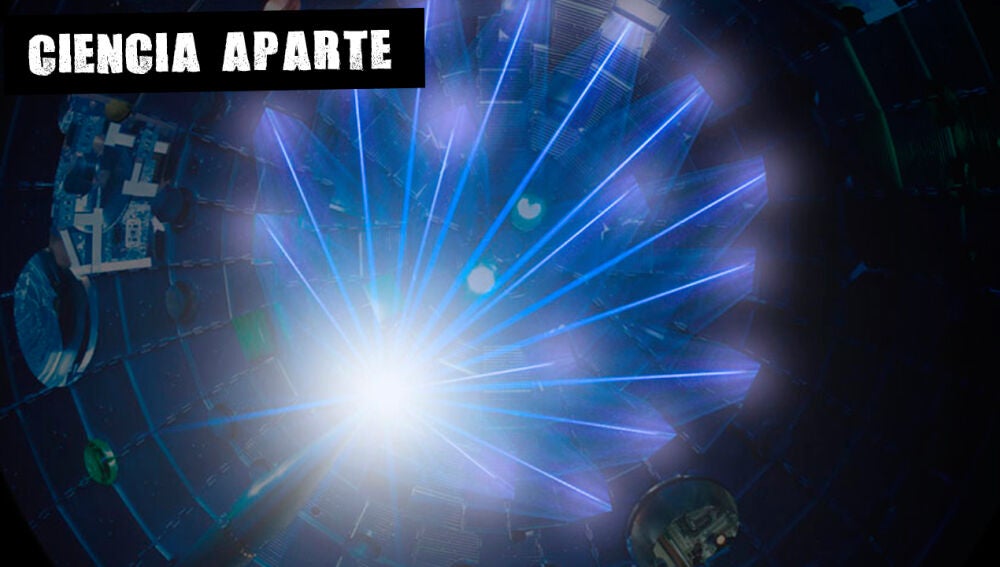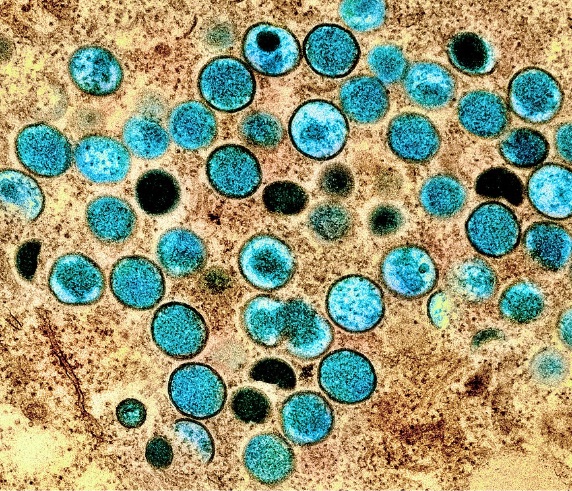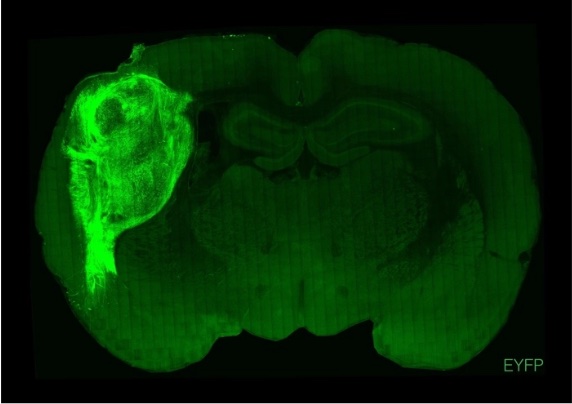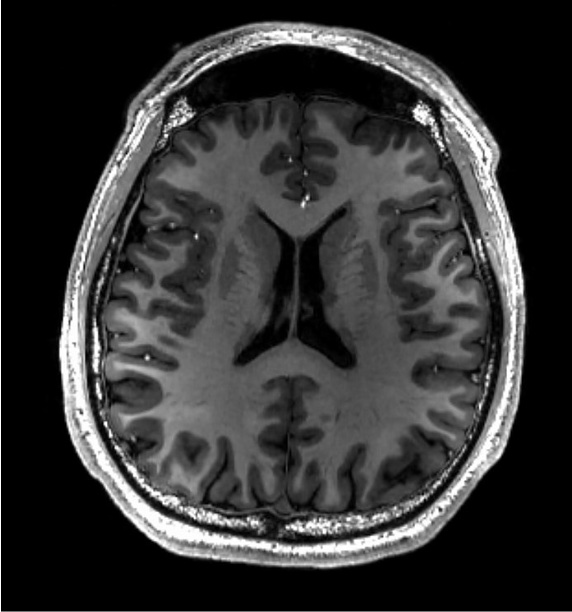Breakthroughs of the Year
Pictures of the beginning of the universe, medicine that can (kind of) reverse death, and other leaps of human ingenuity

This is Work in Progress, a newsletter by Derek Thompson about work, technology, and how to solve some of America’s biggest problems. Sign up here to get it every week.
Updated at 1:40 p.m. ET on December 8, 2022
Today, The Atlantic reveals its inaugural 10 Breakthroughs of the Year. The accomplishments span every station of life, from birth to death, and every component, from our cells to the stars. They include a drug that revives the organs of dead animals; an embryo created without sperm or egg; a telescope to see the universe’s first moments; and an AI that conjures award-winning art.
One theme of this year’s list is the principle of “twin ideas”—the tendency for major breakthroughs to have more than one author. The telegraph was invented by Charles Wheatstone and Samuel Morse in the same year, 1837, and patents for the telephone were filed by Elisha Gray and Alexander Graham Bell on the same day in 1876. Accordingly, many of this year’s breakthroughs are group efforts rather than individual awards. We didn’t just get one mind-blowing generative AI app this year; we got several in the span of a few months. We didn’t just get one “unheard-of” cancer breakthrough; we got several in one year. In this golden age of new vaccine technology, many different companies are building off the success of the COVID shots to deliver new antiviral weaponry for humankind.
These breakthroughs are just the beginning of the long story we call progress. Some of these promising discoveries might never yield a product that’s cheap and widely available. Others may take years or even decades to realize their potential. Capable companies, fair policies, and wise regulations will be necessary to coax real flourishing from these seedlings. For now, let’s just appreciate the promise of these achievements.
The Generative-AI Eruption
A new dawn in how we build
The story of the year in technology might be the emergence of AI tools that seem to trace the outer bounds of human creativity. Image-generating apps, such as Stable Diffusion and DALL-E 2, turn text prompts into lush illustrations. Large language models, such as ChatGPT, can answer complex questions, spit out bespoke Wikipedia articles in seconds, write song lyrics, and even conjure—admittedly mediocre—essays in the style of well-known writers.
What are these machines? Are they an autocomplete for everything, a second mind for the creative class, a replacement for Google Search, or a disembodied superbrain that will one day destroy the world? In the short term, I expect they will serve as assistants for those of us in creative industries. As a journalist, I’m most excited by their potential to help me plow through complicated bits of writing. When I feel myself stuck on a definition or transition sentence, I could give a prompt to the AI, which, having feasted on a banquet of online writing, would generate sentences that I could edit back into my own voice. In fact, I adapted the previous sentence from the prompt: “Write an essay in The Atlantic, in the style of Derek Thompson, on the implications of GPT.” (These sorts of disclosures are faddish today, but in a few years, they may be rendered redundant because so much writing will be AI-assisted.)
DALL-E’s co-inventor Aditya Ramesh said the goal of his technology was to teach “AI systems to see the world the way humans do.” But, more spookily, I think these tools will also teach humans to see the world as AI sees it. We will over time learn how to talk to these things, become fluent in their alien tongue, and discover how the perfect set of words can generate a stunning piece of original art. These uncanny tools, having emerged from our mind, may change our mind about how we work, how we think, and what human creativity really is.
The Power to Reverse Death (Kind Of)
Organs revived in dead pigs
Is death reversible? It was this year for several pigs (or, at least, for their organs). By pumping an experimental substance into the veins and arteries of animals that had been lying deceased for an hour, Yale researchers got their hearts to start beating again. The technology is “very far away from use in humans,” Stephen Latham, a bioethicist at Yale University, told The New York Times. In the short term, scientists said, they hope that their research could help doctors preserve the organs of the recently deceased for use in transplants.
But the longer-term implications of the experiment can’t be ignored: If we have the power to reanimate the heart or other organs of the recently deceased, at what point might we be able to reverse sudden deaths? Could we revive soldiers who bleed out on the battlefield? Could we stock hospitals and nursing homes with buckets of the stuff to resuscitate patients? Should every future American household keep some on hand in the event of a terrible accident?
These questions thrust us into the ethical realm and invoke spooky references to “The Monkey’s Paw,” Pet Sematary, and any number of stories about the dark side of trying to design an escape hatch from mortality. Perhaps, as this technology improves, that debate is on its way. But for millions of people who have lost loved ones to, say, a sudden heart attack or stroke, it’s not remotely dystopian to imagine an injection that could reverse tragedies long considered irreversible.
The Power to Synthesize Life (Kind Of)
Mouse embryos “born” without sperm or egg
This summer, scientists grew an embryo in a lab without the use of sperm, or eggs, or a womb. It happened to be that of a mouse. But the species is of secondary importance. What matters is that using only stem cells, a team at the Weizmann Institute of Science in Israel forged something in a lab that budded a tail on day six, grew a beating heart by day eight, and even evinced the beginnings of a brain. Some scientists I consulted for this project said that the results, which were published this year in the science journal Cell, were the most important scientific breakthrough of 2022.
Scientists are not close to turning stem cells into human babies that make their first gasping cries in antiseptic laboratories. But this work does suggest a major leap forward in our ability to grow synthetic organs and more closely research the relationship between embryonic mutations and developmental diseases. As Paul Tesar, a developmental biologist at Case Western Reserve University School of Medicine, told Stat, “As soon as the science starts to move into a place where it’s feasible to go from a stem cell population in a Petri dish all the way through to organ development, it’s a pretty wild and remarkable time.”
The Vaccine Cavalry Is Coming
Novel therapies for malaria and all influenza strains
Decades from now, historians may regard the 2020s as a golden age of vaccine breakthroughs. The mRNA vaccines that blunted the mortality of COVID were just the start.
In September, a new malaria vaccine developed by Oxford University scientists was found to be extremely effective. A trial involving 450 children in Burkina Faso found that three doses of the vaccine, plus a booster shot, were up to 80 percent effective at preventing infection. Malaria, which kills more than 400,000 people each year, is caused not by a virus, but rather by a shape-shifter called plasmodium, which has so far eluded widespread vaccine attempts. But the latest trials of this Oxford vaccine are among several thrilling efforts bringing us closer to taking on one of the world’s leading causes of child mortality.
In November, an experimental flu vaccine was found to induce a protective immune response against all known types of flu in animals. This breakthrough, which uses mRNA technology, wouldn’t prevent all flu infections. But it would raise patients’ level of immune protection, blunting the harm from seasonal flus and assuaging scientists’ fears that the next global pandemic could be an influenza strain with higher mortality than COVID. The influenza virus family is extensive, with at least 20 identified lineages. Current influenza vaccines provide exceptionally narrow protection. But universal influenza vaccines would prep our immune systems for every lineage. “Imagine if the world’s population was primed against every influenza subtype,” Scott Hensley, a microbiology professor at the University of Pennsylvania, said to Stat. “Wouldn’t that be a great thing?”
A Snapshot of the Beginning of Time
Images of the first galaxies in the universe
In July, NASA’s James Webb Telescope sent back its first images of ancient light from across the universe. With unprecedented clarity, the telescope showed off brilliant nebulae that resembled glowing neon soap bubbles, and red-clay mountain ranges, and luminescent shrimp in a pitch-black ocean. One image, which looked like a blurry destemmed cherry, captured a red blot of light more than 13 billion years old, giving us the oldest-ever snapshot of the infant universe.
The exquisite photos could lead us to new discoveries in cosmology. Flipping through snapshots of the baby cosmos, scientists might be able to piece together the story of the universe's beginning. Behind those lush and dreamy images might lie evidence of what actually happened during, or just after, the Big Bang.
And we’re just getting started. “Astronomers haven’t even cranked up the Webb telescope as far as it can go,” The Atlantic’s Marina Koren wrote in July. “With each deep observation, every big rewind, the telescope will bring us closer to the Big Bang, revealing faint galaxy after galaxy.” For this reason, the James Webb Telescope is so much more than the solar system’s most sophisticated camera-zoom function. It is also history’s greatest time machine.
‘Unheard of’ Advances in Fighting Cancer
Miraculous treatments and an at-home test
In a trial with 18 rectal-cancer patients who were prescribed a novel immunotherapy, researchers found that the cancer vanished in every single patient. No, not receded. Vanished. “I believe this is the first time this has happened in the history of cancer,” Luis Diaz Jr., a doctor at Memorial Sloan Kettering Cancer Center, told The New York Times.
Months later, a trial of a new metastatic-breast-cancer drug delivered similarly miraculous results. Scientists developed a monoclonal antibody treatment targeting tumor cells with a mutant protein HER2, a familiar cancer culprit. The drugs sought out and destroyed cells featuring the mutant with such stunning precision that many patients' lives were extended by more than six months. In conversations with The New York Times, one doctor called the results “unheard-of” and another deemed the trial “a new standard of care.”
This research raises new hopes that a combination of genetic breakthroughs and targeted treatments could fight cancer precisely, cell by cell, without requiring many rounds of brutal chemotherapy. Another genetic mutation commonly associated with various cancers is KRAS. It was considered “undruggable.” But this year, The Wall Street Journal reported that an Amgen lung-cancer pill targeting the mutation beat out a common chemotherapy in a late-stage study, helping patients survive without their tumors getting worse.
Finally, as most people know, the best way to treat cancer is to catch it early. But many of the most deadly cancers are imperceptible until they’ve progressed, at which point they are death sentences. For that reason, simple and accurate cancer tests may be one of the most important fronts in the long war against cancer. This year, the company Grail launched a blood test called Galleri. It’s not cheap, it’s not perfect, and it’s not even approved by the FDA; but it’s a start. The test, which looks for circulating tumor DNA in a blood draw, costs nearly $1,000. According to two early reports, the screening detects 50 types of cancer with a false-positive rate below 1 percent. If these kinds of tests get cheaper, more available, and more accurate, they’ll herald a hopeful future for medicine—one where breakthroughs in both early-stage detection and late-stage treatment squeeze cancer from both ends.
The Obesity-Therapy Surge
Weight-loss medication that actually works
Roughly four in 10 Americans are obese. Until recently, most responsible doctors didn’t prescribe medication for weight loss. The term weight-loss pill was rightly a pejorative, and patients were stuck with “diet and exercise” or bariatric surgery. But the past 18 months have been an extraordinary revolution in weight-loss medication, thanks to a happy accident.
In the 2010s, patients on the diabetes medication semaglutide noticed something interesting: They were losing a ton of weight. And that side effect wasn’t a fluke. Last year, the FDA approved injectable semaglutide for weight loss under a new name: Wegovy. Wegovy seems to work by mimicking naturally occurring hormones that regulate the release of insulin and by slowing down how fast the stomach empties. And it’s not the only medication in the pipeline that helps people lose weight without suffering major side effects. A similar weight-loss medication called tirzepatide showed an average 20 percent reduction in patients’ body weight in its latest clinical trial, and is likely to gain FDA approval next year. The pharmaceutical company Amgen is currently testing a medication called AMG-133. In the Phase 1 trial, patients on the highest dose lost more than 14 percent of their body weight in less than three months. Amgen’s larger Phase 2 study will begin next year.
Cracking the Case of Multiple Sclerosis
And learning something important about the phenomenon of “long viruses”
One tragic legacy of the COVID pandemic is that thousands, and perhaps millions, of people are still suffering from long-term effects of the disease. The coronavirus isn’t special in this regard. Many viral diseases likely have long-term effects, and in time, scientists may learn that many major diseases are best thought of as “long viruses.”
For example, more than 1 million Americans today live with multiple sclerosis. This year, a team of scientists studying a large group of military service members reported strong evidence that the Epstein-Barr virus, best known for causing mononucleosis, is the leading cause of multiple sclerosis. Infection with EBV raised the odds of developing multiple sclerosis, or MS, by more than thirtyfold. Because only a small minority of those infected with the virus developed MS, infection may not be the only, or even the most important, variable. But the study could helpfully focus efforts to prevent MS on vaccines against EBV.
Legal Lab Meat
A regulatory first
Some breakthroughs are about new rules, not just new technology.
This year, the FDA cleared a California company, Upside Foods, to produce lab-grown chicken. It is the first-ever cultivated-meat product to pass this key regulatory hurdle. More obstacles remain, such as approval by the Department of Agriculture, before you can order an Upside Foods chicken sandwich with white meat that grew in a lab. But it’s a start.
Lab-grown meat is important, because the world needs more than moral arguments against meat consumption; we need real (and delicious) choices for consumers. Decades of appeals from animal-rights movements and environmentalists have coincided with a period when Americans just ate more and more chicken. Taking the long view, the available amount of chicken meat per person has more than sextupled in the past century. Of the 80 billion land animals raised and slaughtered every year for human consumption, about 70 billion are chickens.
For now, cultivated meat is a minuscule movement inside a global colossus of animal products. But over time, as I’ve written, scientists with regulatory approval and commercial success will have money to perfect the fat and protein density of lab-grown meat. In one plausible future, decades from now, millions of people may actually prefer the consistency and taste of meat that didn't come from an animal, because they’ll know what they’re buying when a cultivated rib eye is as consistent as an electrical gadget.
New Toys for the Green-Energy Revolution
Smaller nuclear reactors and bigger geothermal breakthroughs
Fighting climate change will require the deployment of technologies already invented, such as solar panels and wind turbines. But it will also require new inventions in fields like nuclear and geothermal technology. This year, we edged closer to breakthroughs in both categories.
Let’s start with nuclear power, which is safe, clean, unfairly tainted by several high-profile disasters, and hideously expensive to get going. But small and safe reactors would be cheaper to build and faster to approve. NuScale Power Module, the only reactor of its kind to receive design approval from the U.S. Nuclear Regulatory Commission, earned a place in Time magazine’s 2022 inventions of the year. Less than 80 feet tall, the reactor can generate enough clean electricity to power roughly 60,000 homes. The first plant could be running by the end of the decade.
Then there’s geothermal energy, which means drilling deep into the ground to use the Earth’s heat for power. Geothermal is an ideal energy source—more consistent than wind or solar and with none of the waste concerns of nuclear. The problem is that, in some parts of the world, you have to go really, really deep to access geothermally heated water. And when we drill deep into the planet, we hit ancient rock—typically granite—that requires new technology to penetrate. The start-up Quaise is working on a drilling technology that can vaporize granite with a highly concentrated beam of radio-frequency power. If such a technology became widely available, deep drilling would be commonplace and geothermal energy would be accessible on just about any patch of land. It would be as though humankind conceived of a magic wand that, waved across the Earth, makes any square mile as energy-rich as an oil-gushing stretch of Texas or Saudi Arabia.
Correction: This article originally misstated the name of the company cleared by the FDA to produce lab-grown chicken. It is Upside Foods.











